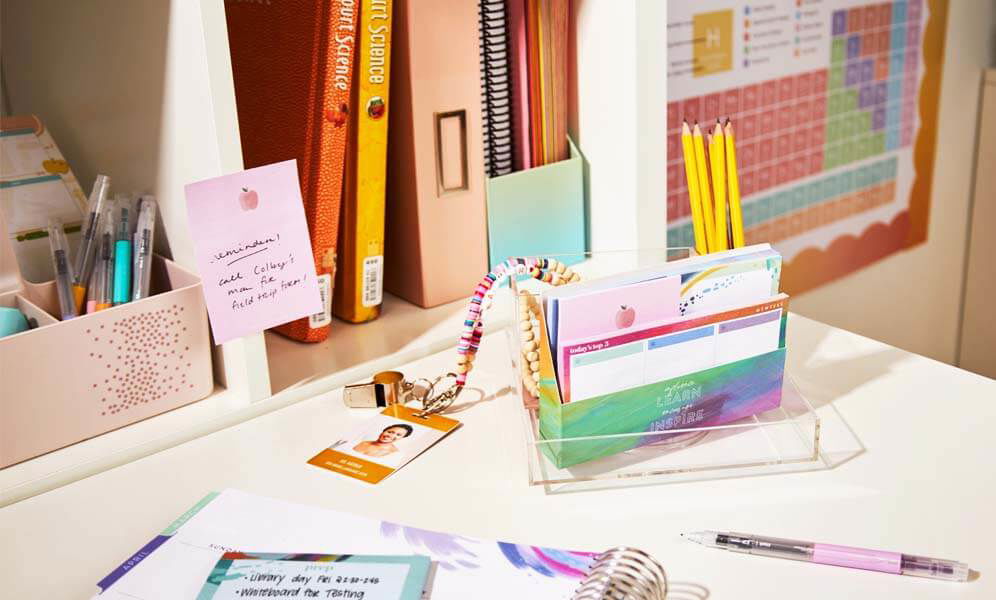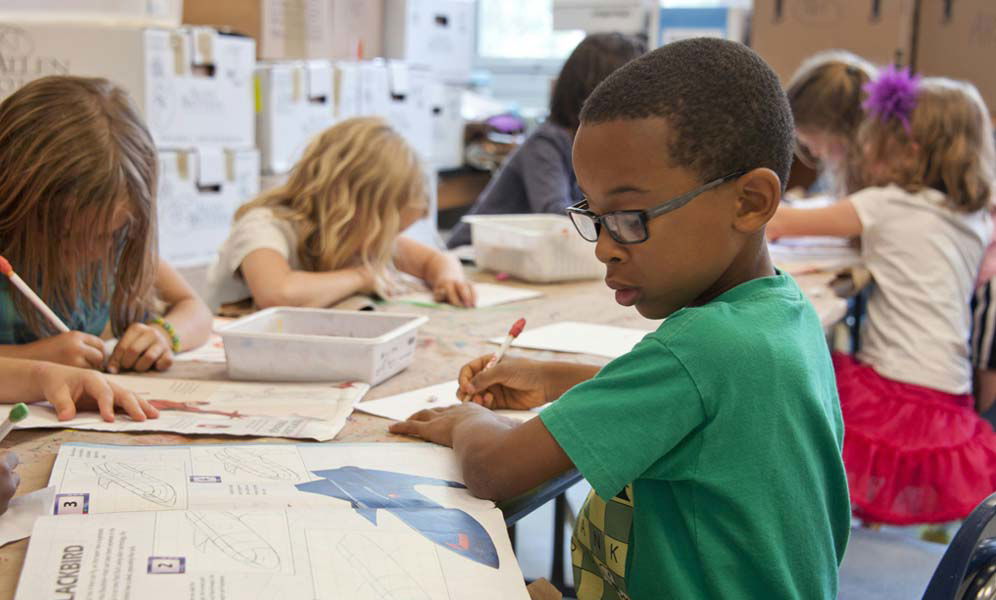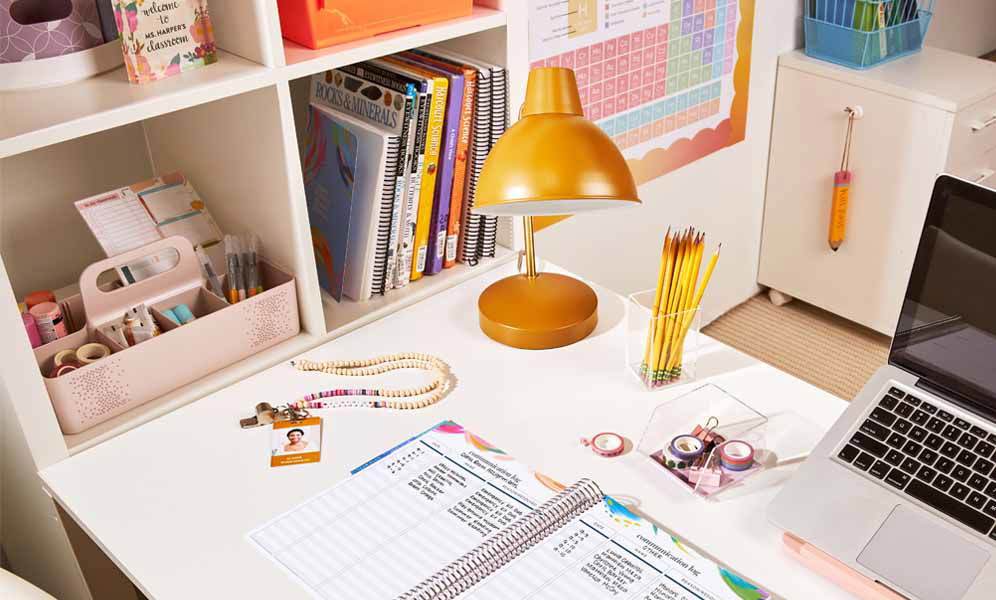11 Classroom Setup Ideas for Creative Learning Spaces

If you're reading this, you understand how important an inspiring and effective classroom setup is for fostering a positive learning environment. Our organization experts understand the importance of designing spaces that are not only functional but also spark creativity and enthusiasm in students. That's why we're sharing 11 innovative classroom setup ideas to transform your classroom space into a dynamic hub of education and creativity. These tips are designed to help you craft an environment that encourages active participation and joyful learning.
1. Embrace Flexible Seating Arrangements.
Flexible seating arrangements can significantly enhance student engagement and collaboration. Consider incorporating options such as bean bags, floor cushions, and adjustable desks. These diverse seating choices allow students to choose what makes them most comfortable and conducive to learning. Flexible seating also encourages movement and adaptability, which can be beneficial for different learning activities and teaching styles. Allowing students to select their seating arrangements empowers them to take control of their learning experience.
By fostering a flexible seating arrangement, you create a versatile classroom space that adapts to various needs and activities, enhancing the overall learning environment.
2. Create Reading Nooks and Quiet Zones.
Reading nooks and quiet zones are a great way to provide students with a peaceful retreat for independent study and reading. These spaces can be as simple as a cozy corner with comfortable seating and good lighting. Stock these areas with a fun variety of books and educational resources to encourage a love for reading and provide a quiet place for reflection and focused work. Creating these tranquil spaces allows students to decompress and concentrate, helping create a balanced learning environment students (and teachers) need.
3. Integrate Technology Into Your Classroom Setup.
Incorporating technology into your classroom setup is essential these days; but that's not to say tech should replace hands-on, tactile, analog writing and learning. They go hand in hand, offering unique benefits (more of that balance we've been talking about).
Ensure that your classroom is equipped with the necessary tech tools, such as tablets, computers, and interactive whiteboards. Creating a tech-friendly environment helps students develop digital literacy skills and can make learning more interactive and engaging. Arrange your tech stations thoughtfully to maximize accessibility and efficiency. Integrating technology not only enhances traditional teaching methods but also prepares students for the digital world.
This integration is crucial for making your classroom setup ideas relevant and effective, aligning with modern educational standards.
Related: Create your perfect hybrid planning system with How to Use Digital and Paper Teacher Planners.
4. Create a Student Work Display Area.
Displaying student work not only celebrates their achievements but also fosters a sense of pride and motivation. Dedicate a section of your classroom to showcase projects, artwork, and other accomplishments. Regularly updating this display keeps it dynamic and encourages students to put forth their best effort. This area serves as a constant reminder of their hard work and creativity. A well-curated student work display area can inspire other students and create a positive, competitive spirit in the classroom.
This display can also serve as an example of the diverse talents and efforts within the classroom, fostering a supportive and motivating environment.
5. Incorporate Collaborative Workspaces.

Creating areas where students can work together on projects and assignments is crucial for developing teamwork and communication skills. Designate specific zones with large tables or clusters of desks that facilitate group work. Collaborative workspaces should be equipped with all the necessary materials to support group activities and foster a sense of community and shared learning experiences. These workspaces encourage students to engage in group discussions, problem-solving, and creative brainstorming.
Collaborative workspaces also make it easier for instructors to facilitate group activities, providing a structured yet flexible setting for collaborative learning. (That's a win, win!)
6. Keep Supplies Organized and Accessible.
Organizing supplies and making them easily accessible to students can streamline classroom activities. Use labeled bins, shelves, and storage carts to keep everything in order. Clearly defined storage areas help students find what they need quickly and return items to their proper place. An organized classroom minimizes distractions and maximizes learning time. Keeping supplies in order with easy access ensures that transitions between activities are smooth, maintaining the flow of your classroom routines.
An orderly classroom also teaches students the importance of organization and responsibility, essential skills they'll benefit from throughout life.
Related: Discover the Best School Supplies for All Ages.
7. Utilize Wall Space for Learning.
Maximize your classroom’s wall space by using it for educational displays and interactive learning tools. Posters, charts, and bulletin boards can reinforce teaching lessons and provide visual stimulation. Consider creating interactive wall spaces with whiteboards, wall organizers, or chalkboards where students can collaborate and contribute ideas. Utilizing wall space effectively turns every inch of your classroom into a potential learning opportunity. Interactive wall displays can make learning more engaging and help reinforce key concepts in a visually appealing way.
Using bulletin boards for displaying essential information or student achievements also keeps the classroom environment dynamic and informative.
8. Create Activity Zones.
Designating specific areas for different activities can help manage classroom flow and keep students engaged. Create zones for reading, art, science experiments, and technology use. Clearly defined activity zones allow students to transition smoothly between tasks and maintain focus. These zones can also make it easier to organize and store materials related to each activity. Activity zones provide structure and variety in your classroom, making it easier to manage group work and individual tasks effectively.
These zones create a well-rounded learning environment, catering to diverse educational needs and keeping students engaged throughout the day.
9. Plan Your Classroom Set Up on Paper First.
Before making any physical changes, plan your classroom setup on paper. Use a planner or notebook to sketch out your ideas so you can visualize the space and make adjustments before committing. Consider factors such as traffic flow, accessibility, and the placement of key resources. Planning ahead helps you create a well-thought-out and efficient learning environment. This preparatory step can save time and effort, ensuring that your final setup is both functional and aesthetically pleasing.
By planning your classroom space on paper first, you can foresee potential issues and adjust your layout for optimal efficiency and comfort.
Consider using a teacher planner to make your classroom more engaging Teacher Lesson Planner 101. You can also take your lesson plans to the next level with How to Use an Erin Condren Teacher Lesson Planner.
10. Add Personal Touches.
Adding personal touches to your classroom can create a warm and inviting atmosphere. Decorate with items that reflect your personality and teaching style, such as photos, inspirational quotes, and plants. Personal touches can make your classroom feel like a second home for you and your students, fostering a positive and supportive learning environment. Personalized spaces help build a sense of community and belonging, encouraging students to take pride in their learning environment.
Including elements that reflect the interests and achievements of your students can also make the room feel more inclusive and engaging.
11. Design an Efficient and Comfortable Teacher’s Area.

An efficient and comfortable teacher’s area is a must for maintaining organization and productivity (and sanity for the teacher). Ensure that your desk accessories and storage solutions are well-organized and easily accessible. A comfortable chair, good lighting, and personal touches can make your workspace more inviting. An organized teacher’s area sets a positive example for students and helps you manage your classroom more effectively. When instructors feel comfortable and well-organized, it translates into a more structured and effective learning environment for students.
Creating a personalized and efficient teacher's area not only helps in managing classroom routines smoothly and efficiently, but it also helps reduce stress for the instructor (which, no doubt, positively affects the kids, too).
Creating a classroom setup that supports creative learning is an ongoing process. Regularly reassessing and adjusting your space can help keep it fresh and engaging. Explore our full collection of classroom organizational essentials to find the tools and inspiration to design the perfect learning environment.
Related Organization + Productivity Guides
You may also enjoy these tips and tricks our experts shared to help enhance your organizational journey, in the classroom and beyond: